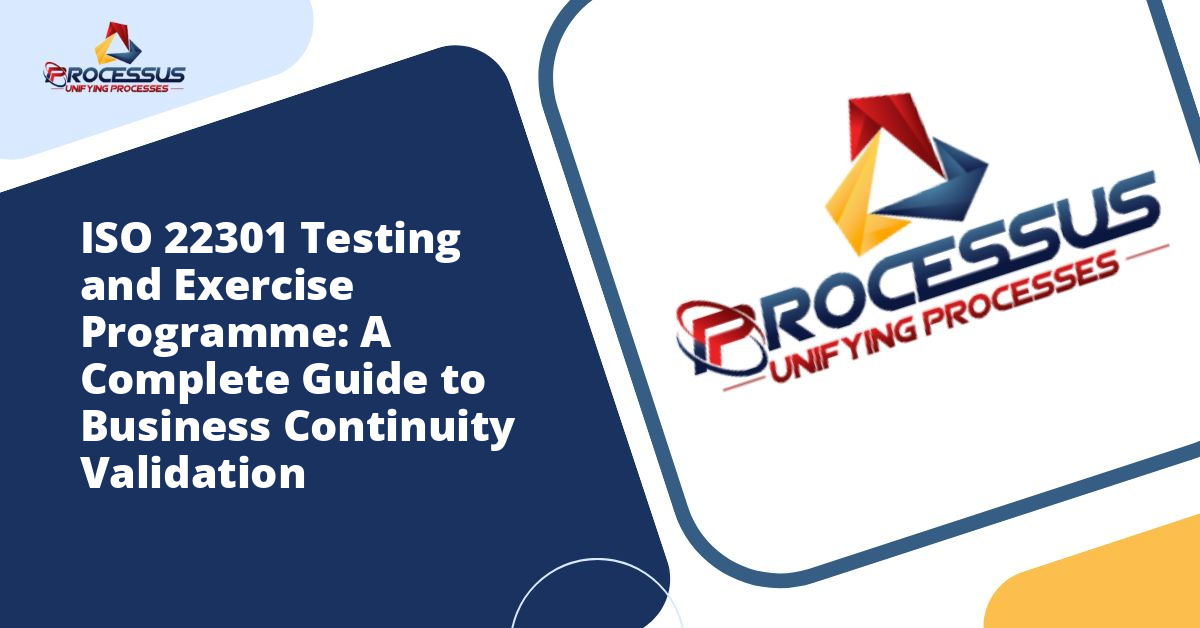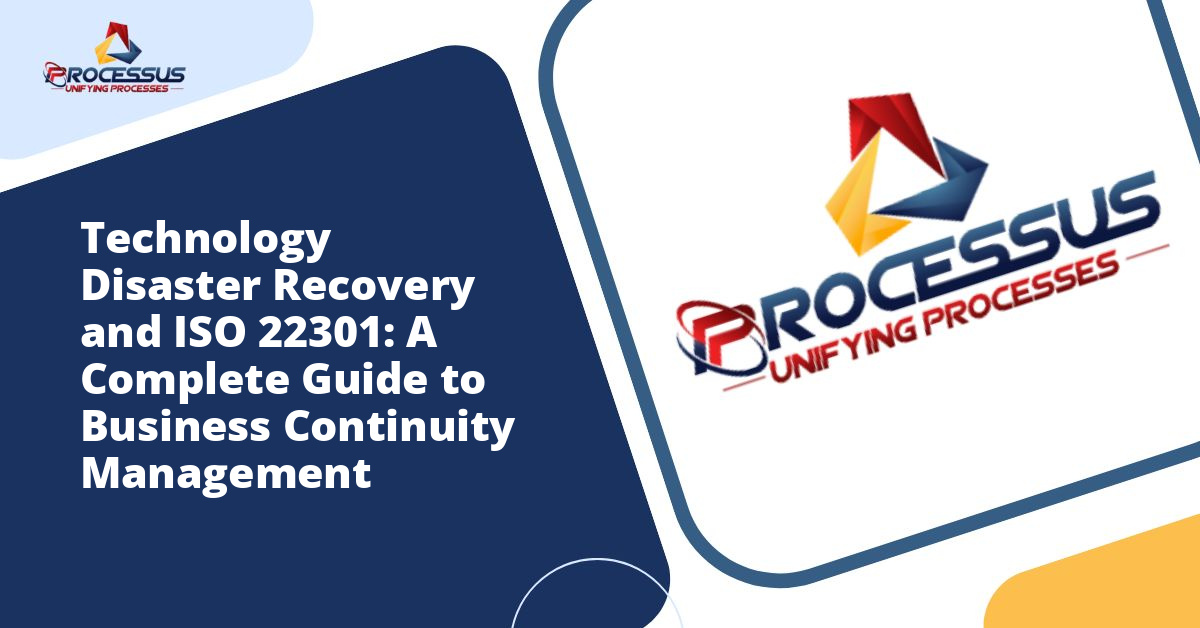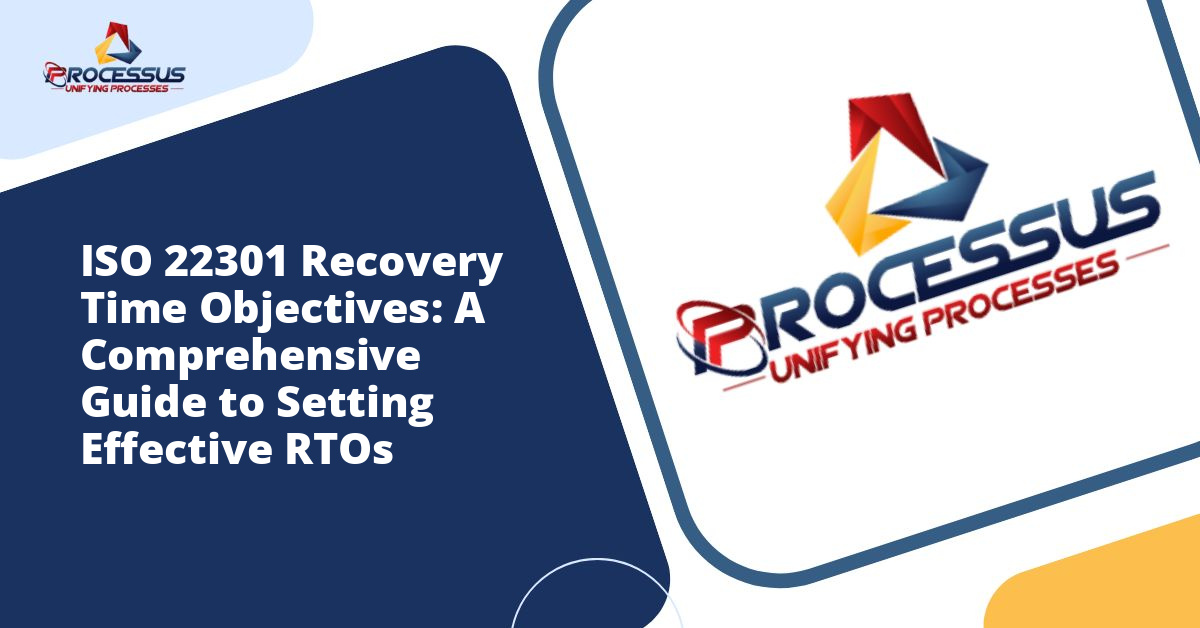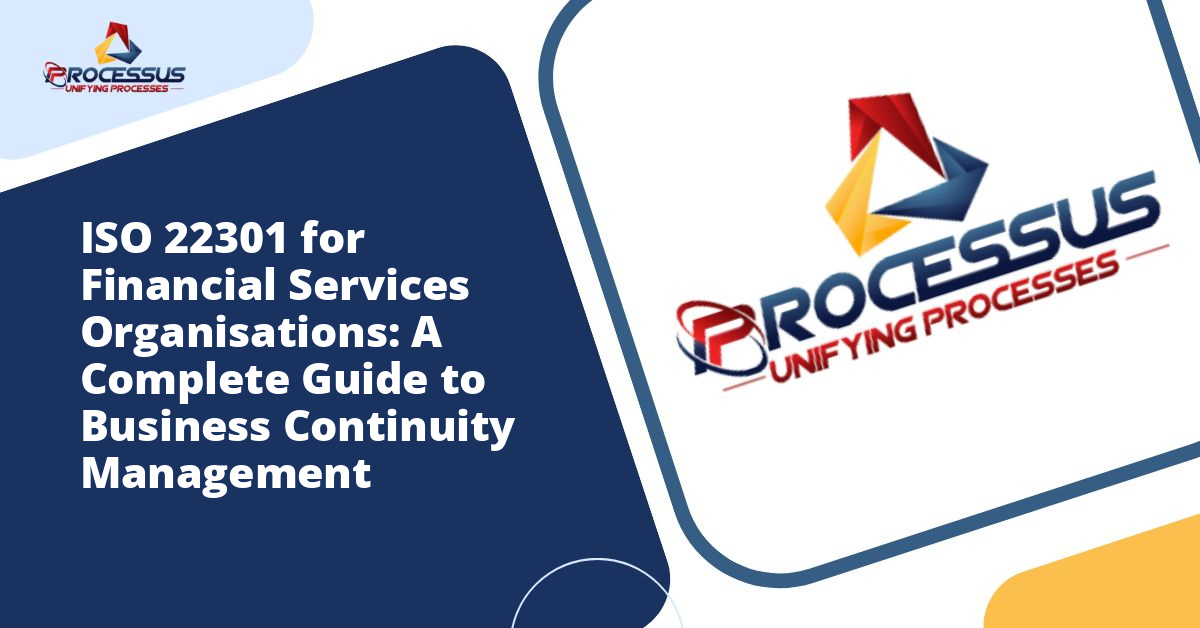Business continuity management has become an essential aspect of organizational resilience in today’s unpredictable business environment. While developing comprehensive business continuity plans is crucial, the true measure of their effectiveness lies in regular testing and validation. The ISO 22301 standard, which sets the framework for business continuity management systems, emphasizes the critical importance of implementing a robust testing and exercise programme. This comprehensive guide explores the fundamental aspects of ISO 22301 testing and exercise programmes, providing organizations with the knowledge needed to validate and improve their business continuity capabilities.
Understanding ISO 22301 and Its Testing Requirements
ISO 22301 is the international standard for business continuity management systems (BCMS), providing a structured framework for organizations to prepare for, respond to, and recover from disruptive incidents. The standard recognizes that having documented plans is only the first step in achieving true organizational resilience. Without proper testing and validation, organizations cannot be confident that their business continuity plans will function effectively during actual emergencies. You might also enjoy reading about ISO 22301 Business Continuity Plan Development: A Complete Guide for Organizations.
The testing and exercise programme forms a cornerstone of ISO 22301 compliance, ensuring that business continuity arrangements are not only documented but also practical, effective, and understood by relevant personnel. This requirement is specifically addressed in Clause 8.5 of the standard, which mandates that organizations validate their business continuity procedures through regular testing and exercises. You might also enjoy reading about Business Impact Analysis for ISO 22301 Compliance: A Complete Implementation Guide.
The Purpose and Benefits of Testing and Exercise Programmes
Implementing a comprehensive testing and exercise programme serves multiple strategic purposes within an organization. Understanding these objectives helps organizations appreciate why investment in such programmes delivers substantial returns in terms of resilience and preparedness. You might also enjoy reading about ISO 22301 vs ISO 27031: A Complete Guide to Understanding the Key Differences.
Validation of Business Continuity Plans
The primary purpose of testing is to validate that business continuity plans, procedures, and arrangements will work as intended during an actual disruption. Testing reveals whether documented procedures are practical, whether recovery time objectives can be met, and whether resources allocated for business continuity are adequate and accessible.
Identification of Gaps and Weaknesses
Through systematic testing, organizations can identify gaps in their business continuity arrangements before they become critical failures during real incidents. These might include missing contact information, inadequate backup facilities, insufficient training, or unrealistic recovery assumptions. Early identification enables corrective action in a controlled environment rather than during a crisis.
Enhancement of Organizational Competence
Regular exercises improve the competence and confidence of individuals who have roles in business continuity response. Participants become familiar with their responsibilities, practice decision-making under pressure, and develop the muscle memory needed for effective crisis response. This familiarity significantly reduces response times and improves coordination during actual incidents.
Demonstration of Due Diligence
A documented testing and exercise programme demonstrates to stakeholders, regulators, customers, and insurers that the organization takes business continuity seriously and has validated its preparedness. This can enhance reputation, satisfy compliance requirements, and potentially reduce insurance premiums.
Types of Tests and Exercises
ISO 22301 does not prescribe specific types of tests that organizations must conduct. Instead, it allows flexibility for organizations to design testing programmes appropriate to their context, complexity, and risk profile. However, best practice suggests implementing a variety of test types to comprehensively validate different aspects of business continuity arrangements.
Desktop Exercises
Desktop exercises, also known as tabletop exercises, involve discussion-based scenarios where participants talk through their responses to a simulated incident. These exercises are typically conducted in meeting room settings and focus on testing decision-making processes, communication protocols, and understanding of roles and responsibilities. Desktop exercises are relatively low-cost, easy to organize, and excellent for initial familiarization with business continuity plans. They provide an opportunity to identify obvious gaps without disrupting normal operations.
Walkthrough Tests
Walkthrough tests represent a step up in complexity from desktop exercises. Participants physically move through the steps documented in business continuity procedures, checking that resources are available and accessible, contact information is current, and the sequence of actions is logical and practical. These tests help identify practical issues such as locked doors, inaccessible equipment, or outdated technology that might not be apparent from documentation review alone.
Simulation Exercises
Simulation exercises create more realistic conditions by introducing time pressure, information uncertainty, and realistic complications. These exercises may involve simulated media inquiries, stakeholder communications, and cascading problems that require adaptive responses. Simulation exercises test not only technical procedures but also stress management, decision-making under pressure, and team coordination.
Technical Recovery Tests
Technical recovery tests focus specifically on validating IT disaster recovery capabilities. These tests verify that data can be recovered from backups, systems can be restored to alternate facilities, and recovery time objectives for critical technology systems can be met. Technical tests may range from simple backup restoration to full failover to alternate data centers.
Full-Scale Exercises
Full-scale exercises represent the most comprehensive and realistic form of testing, involving actual activation of business continuity arrangements. These might include relocating staff to alternate worksites, operating from backup facilities, or invoking alternate supplier arrangements. Full-scale exercises provide the highest level of validation but require significant planning, resources, and coordination to execute safely and effectively.
Component Testing
Rather than testing entire business continuity plans, component testing focuses on specific elements such as emergency notification systems, backup power generators, or specific recovery procedures. This targeted approach allows more frequent testing of critical components without the resource investment required for comprehensive exercises.
Developing an Effective Testing and Exercise Programme
Creating a testing and exercise programme that meets ISO 22301 requirements while providing meaningful validation requires careful planning and a systematic approach.
Establishing Testing Objectives
Every test or exercise should have clearly defined objectives that specify what aspects of business continuity arrangements are being validated. Objectives might include verifying that specific recovery time objectives can be met, confirming that communication procedures work effectively, or assessing whether staff understand their roles. Clear objectives enable focused test design and provide criteria for evaluating success.
Determining Testing Frequency
ISO 22301 requires that testing be conducted at planned intervals but does not specify exact frequencies. Organizations should base testing frequency on several factors including the criticality of processes, the rate of organizational change, regulatory requirements, and previous test results. As a general principle, more critical processes and procedures should be tested more frequently. Many organizations adopt an annual cycle for major exercises while conducting more frequent component tests and reviews.
Creating a Testing Schedule
A multi-year testing schedule ensures that all aspects of business continuity arrangements receive appropriate validation over time. The schedule should balance different test types, rotate focus areas, and progressively increase complexity. A well-designed schedule might start with desktop exercises for newly developed plans, progress to walkthrough tests as familiarity increases, and periodically conduct more complex simulations or full-scale exercises.
Designing Realistic Scenarios
The scenarios used in tests and exercises should be realistic, relevant to the organization’s risk profile, and appropriately challenging. Scenarios should be based on the business impact analysis and risk assessment, reflecting disruptions that the organization has identified as credible threats. Effective scenarios introduce complications and decision points that test adaptability rather than simply following scripted procedures.
Defining Roles and Responsibilities
Every test or exercise requires clear definition of participant roles, including who will be exercising their business continuity response roles, who will facilitate or control the exercise, and who will observe and evaluate. External facilitators can provide valuable objectivity and expertise, particularly for more complex exercises.
Conducting Tests and Exercises
The actual conduct of tests and exercises requires careful management to ensure safety, achieve objectives, and create a learning environment rather than a judgmental one.
Pre-Exercise Preparation
Thorough preparation is essential for successful exercises. This includes developing detailed exercise plans, preparing scenario materials and injects, securing necessary resources and facilities, briefing facilitators and observers, and communicating appropriate information to participants. The level of advance warning given to participants should align with exercise objectives. Announced exercises allow preparation and are better for initial familiarization, while unannounced exercises provide more realistic stress testing.
Creating a Safe Learning Environment
Exercises should be positioned as learning opportunities rather than tests of individual performance. Participants should feel safe to make mistakes, ask questions, and identify problems without fear of negative consequences. This psychological safety is essential for honest problem identification and organizational learning. Exercise facilitators should emphasize that the goal is to improve business continuity capabilities, not to evaluate individuals.
Managing Exercise Flow
During exercises, facilitators must balance realism with safety, ensure exercises remain focused on objectives, provide scenario injects at appropriate intervals, and manage time effectively. Flexibility is important as unexpected issues or learning opportunities may require adjustment of the planned exercise flow. Facilitators should observe and document participant actions, decisions, and problems for later analysis.
Ensuring Safety
Particularly for more complex exercises involving physical activities or operational systems, safety must be a paramount concern. Clear stop mechanisms should be established, risks should be assessed and mitigated, and exercises should never compromise actual operational capability or safety. For technical tests involving production systems, appropriate safeguards and rollback procedures must be in place.
Evaluating Test Results and Continuous Improvement
The value of testing and exercises is realized primarily through what happens after they conclude. Systematic evaluation and follow-through on identified issues transforms testing from a compliance activity into a driver of continuous improvement.
Debriefing and Initial Review
Immediately following an exercise, a hot debrief allows participants to share initial observations while details are fresh. This provides an opportunity to capture perspectives, clarify what occurred, and identify obvious issues. The facilitator should guide discussion to cover what went well, what could be improved, and what surprised participants.
Comprehensive Analysis
Following the initial debrief, a more thorough analysis should be conducted, reviewing observer notes, comparing actual performance against objectives and success criteria, and identifying root causes of problems rather than just symptoms. This analysis should consider whether identified issues represent gaps in plans, inadequate training, resource shortfalls, or unrealistic assumptions.
Documentation and Reporting
ISO 22301 requires that organizations maintain documented information about testing activities. This includes test plans, scenarios used, results obtained, and decisions made. Formal test reports should document objectives, methodology, participants, findings, and recommendations. These reports provide evidence of testing for audits and enable tracking of improvement over time.
Action Planning and Follow-Through
The most critical phase of the testing process is ensuring that identified issues lead to concrete improvements. Findings should be translated into specific action items with assigned responsibilities and deadlines. Action plans should be tracked to completion, with accountability for ensuring improvements are implemented. Without this follow-through, testing becomes an empty exercise rather than a driver of improved resilience.
Updating Business Continuity Arrangements
Test results should trigger updates to business continuity plans, procedures, resource allocations, and training programmes. If tests reveal that recovery time objectives cannot be met, organizations must decide whether to enhance capabilities or accept revised objectives. Changes in organizational context identified during testing should prompt review of business impact analysis and risk assessment.
Common Challenges and How to Address Them
Organizations frequently encounter obstacles when implementing testing and exercise programmes. Understanding these challenges helps in developing strategies to overcome them.
Resource Constraints
Testing requires time, budget, and personnel that organizations may struggle to provide amid competing priorities. This challenge can be addressed by starting with less resource-intensive test types such as desktop exercises, conducting component tests rather than always testing entire plans, and integrating testing with existing activities such as training sessions or team meetings. Demonstrating the value gained from testing helps secure ongoing resource commitment.
Participation and Engagement
Securing active participation from busy personnel can be difficult, particularly if business continuity is not seen as relevant to their daily roles. Building engagement requires clear communication about the purpose and benefits of testing, visible senior management support, scheduling exercises at convenient times, and demonstrating that participant input leads to meaningful improvements. Making exercises realistic and even incorporating elements of challenge or competition can increase engagement.
Realism Versus Disruption
Organizations must balance the desire for realistic testing against the need to avoid disrupting actual operations or creating customer impact. This balance can be managed through careful exercise design, conducting tests during lower-activity periods, testing in isolated environments when possible, and progressively building toward more realistic tests as confidence grows.
Fear of Failure
Organizations sometimes avoid rigorous testing because of concern about what problems might be discovered or how poor performance might reflect on responsible individuals. This fear is counterproductive because it prevents identification of problems while there is still time to fix them. Leadership must create a culture that views testing as a learning activity and treats identified problems as opportunities for improvement rather than evidence of failure.
Integration with Overall Business Continuity Management
Testing and exercise programmes do not exist in isolation but form an integral part of the broader business continuity management system. The programme should be connected to other BCMS elements including business impact analysis, risk assessment, strategy development, plan documentation, training, and performance evaluation. Test results may reveal that business impact assumptions were incorrect, that risk assessments missed important scenarios, or that chosen strategies are not viable. This feedback loop ensures that the entire BCMS remains relevant and effective as the organization and its environment evolve.
Demonstrating Compliance and Maturity
For organizations seeking ISO 22301 certification, auditors will examine evidence that testing and exercise requirements are being met. This requires documented procedures for testing, records of tests conducted, analysis of results, and evidence that findings lead to improvements. Beyond mere compliance, mature organizations use testing programmes strategically to drive resilience improvement, benchmark their capabilities against industry peers, and build competitive advantage through superior preparedness.
Conclusion
A well-designed and consistently implemented testing and exercise programme transforms business continuity from theoretical documentation into practical organizational capability. By systematically validating plans, identifying gaps, building competence, and driving continuous improvement, testing programmes ensure that organizations are genuinely prepared to respond to disruptions rather than simply possessing plans that may or may not work when needed.
The investment required to establish and maintain an effective testing programme is modest compared to the potential consequences of business continuity failures during actual incidents. Organizations that embrace testing as a strategic activity rather than a compliance checkbox position themselves for superior resilience and more rapid recovery when disruptions occur.
As business environments become increasingly complex and interconnected, the importance of validated business continuity capabilities will only grow. Organizations that establish robust testing and exercise programmes today are building the foundation for sustainable success regardless of what challenges the future may bring. The journey toward mature business continuity management is ongoing, and testing programmes provide the compass that keeps organizations moving in the right direction.







